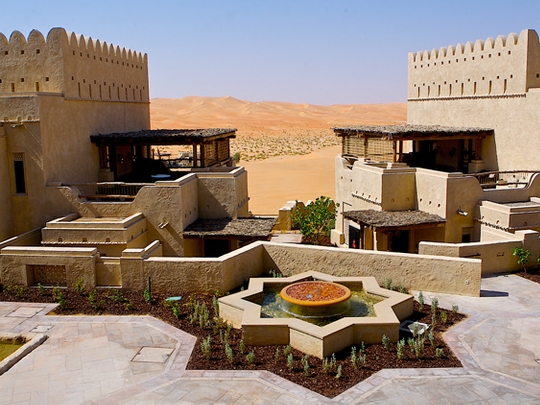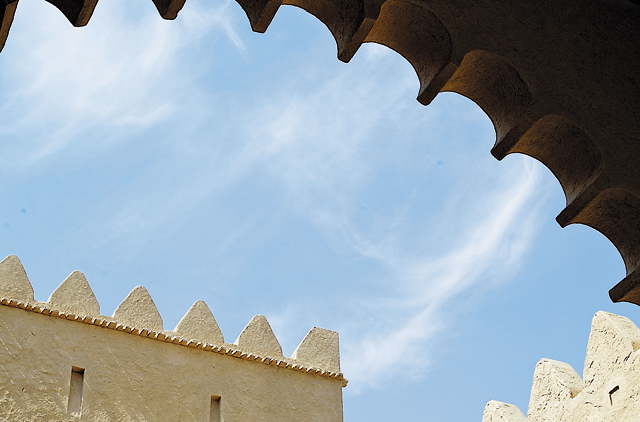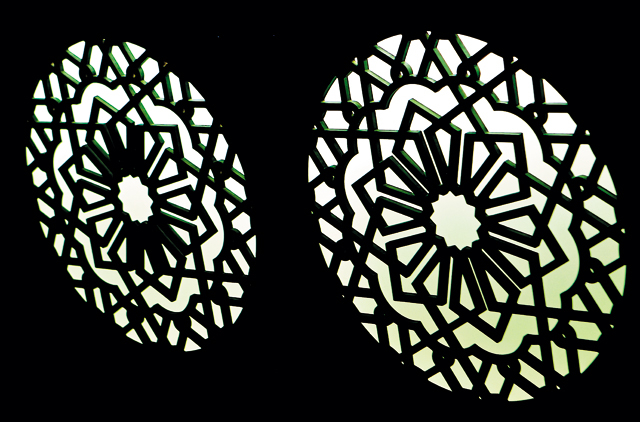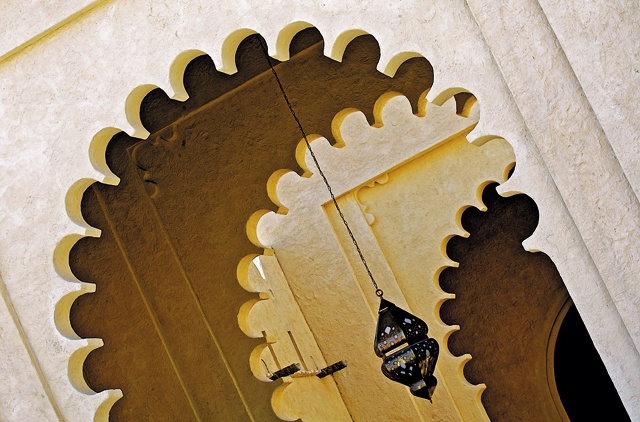
Mystifying, beautiful and pure is how seasoned desert scopers would describe Liwa. Tucked away in the heart of Abu Dhabi, Liwa is the oasis of the Rub’ Al Khali (Empty Quarter), the world’s largest stretch of uninterrupted desert which touches Saudi Arabia, Oman and Yemen. The same Rub Al Khali known for its 300-foot-high dunes, fiery sunsets and colours, and romanticised landscape in Wilfred Thesiger’s travel writings, the Arabian Sands.
This sandy orange and red canvas is the setting for Anantara’s latest resort, Qasr Al Sarab. With a five-star luxury brand name and a location as true to the land as the Rub Al Khali, the design order of the day was luxury, tradition and heritage combined. And anyone having lived in the UAE long enough may have become a tad jaded (albeit appreciative) of this concept. We are nevertheless wowed. This is genuine design splendour and luxury in a land where we thought we had seen it all.
World class resort chain Anantara teamed up with Abu Dhabi’s Tourism Development & Investment Company (TDIC), and Qasr Al Sarab was born. The resort sits on top of a crescent-shaped dune surrounded by desert land ensconced in a rich history dating back 9,000 years. The sprawling low-level structure reflects a fort-style, understated façade representing old Arabia, while the luxury and splendour of its interiors represent five-star hospitality at it’s best.
At the opening earlier this year, Chairman of TDIC, Shaikh Sultan Bin Tahnoon Al Nahyan, proudly announced their concept. “This is more than just an extraordinary luxury resort; this is a symbol of our highly respected Arabian hospitality and deep-rooted culture.”
Homage to heritage was the seed planted in the minds of the architects and interior designers. Balancing classic bedouin tradition with high-end leisure and luxury was a challenge carefully overcome by the architects and the design team. Fernando V. Arteaga, Associate Director of Hirsch Bedner Associates, says, “We fully understood the importance of what our client TDIC wanted. In keeping with that, we wanted to develop a pure, cultural experience with the romance and mystique of the past but within luxurious surrounds, highlighting comfort and hospitality that is central to Emirati culture.”
Stepping inside, the interiors feature sand-coloured surfaces containing terracottas, earth-tones, designs and motifs that represent the magic of old Arabia. The interior design team curtailed their resources to materials that were local. Local furniture factories churned out ornate pieces under guidance and supervision, and regional artisans were employed to create local, custom patterns for the detailing, thereby reinforcing culture in every area.
To educate tourists on the bedouin way of life, heritage art and cultural artefacts dot the property. Accessories adorning the walls and shelves all participate in the story relaying the history of the area and Emirati culture. Old books on tabletops in the lobby and the library, and camel saddles on shelves proudly celebrate their culture and heritage.
To achieve this result, well before the creation of Qasr Al Sarab was underway, the makers of this desert queen had to educate themselves thoroughly. Marcelo Tholozan, architect and project manager for TDIC details the brief, the essence of which was to create a landmark showcasing the country’s traditions and history without neglecting the functionality
of a five-star resort.
“Due to the significance of the project and its intimate working relationship with the heritage of the emirate of Abu Dhabi, the design process involved a close working relationship with cultural and other higher authorities such as the Abu Dhabi Authority for Culture and Heritage, and the Al Ain Museum,” he explains.
The HBA team adopted similar teaching methods. “We worked in close collaboration with TDIC and Emirati scholars to ensure the truthfulness of desert living,” says Ferdinand. “Most hotels are designed for guests, but Qasr Al Sarab has also been designed for the Emirati people to remind them of where they dwell and who they are. Qasr Al Sarab goes beyond creating a sense of place; it embodies a culture and way of life, and the vast romantic desert which shaped both,” says Ferdinand.
The resort features 154 rooms, 42 villas and 10 royal villas which, as their name suggests, are fit for a shaikh. These mini-palaces, although designed within the realms of the earthen bedouin palate – muted tones and rich pigments – are filled with the luxuries and comfort befitting royalty. Each palace contains large living and dining areas, private pools and outdoor terraces, and services that will certainly leave the guest not wanting.
The resort itself, with its tiny alleys, meandering corridors and doors leading to more doors, cultivates a sense of mystery but with elegance and panache. Within the confines of windtowers and Arabian architecture lies a luxury spa, conference centre, and a shimmering outdoor pool
that looks on to the undulating sandscape
and dunes as far as the eye can see.
The exterior, more so than the interior, is devoid of gaudy Baroque or Versace-style opulence. It also remains free of standard modern-Arabian opulence (gold and stones embedded in motifs, carvings, funishings and accessories). The façade remains humble
yet exquisite.
For Marcelo, the devil was in the detail, in the quality of design solutions and their true reflection of the heritage elements. “For example, palm trunk-style roof spouts executed in glassfibre reinforced concrete took months before we finally agreed on the shape and colour. The same attention was given to the stone insets in the façades and the angle of the castle towers to make them believable in terms of proportion and inclination.” Creating such a sprawling luxury resort amidst dunes that run up to 300 metres proved immensely challenging, Marcelo admits. “There are no tricks or recipes but a lot of hard work. It was long hours, but great fun!”
















